Review: vivo X80 Pro
Updated (November 18, 2022)
With a little delay, the Funtouch OS 13 update for the vivo X80 Pro has been rolled out for a few days. The update with the version number PD2185BF_EX_A_13.1.10.13.W30 is also an upgrade from Android 12 to Android 13.
The Android security patch has been updated to November 2022. All changes can be seen in the attached screenshots.
Update (October 28, 2022)
Just a few days ago, vivo announced that the Android 04-based Funtouch OS 13 update will be distributed via OTA from November 13th. Shortly before the switch to Funtouch OS 13, vivo delivered a small interim update for Funtouch OS 12.
The update with version number PD2185BF_EX_A_12.0.14.0.W30 updates the security patch of the vivo .
Update (October 11, 2022)
The Prime Exclusive Offers will take place for Amazon Prime members from October 11th - 12th. The vivo X80 Pro also made it into the deals.
With shipping from Amazon, you can buy the smartphone for only 1076 euros instead of 1299 euros (RRP).
Offer on Amazon
Update (23. August 2022)
Vivo distributes the Android 13-based Funtouch OS 13 Beta (PD2185BF_EX_A_13.1.1.9.4.W30.V000L1) to selected testers.
The update offers new features and follows the unrestricted "Material You" design language. However, we still have to be patient until the final rollout of Funtouch OS 13.
Vivo X80 Pro is the name of the new high-end smartphone, with which vivo is back on the European market this year. The vivo X70 Pro+, which was only released in China, was skipped and the European offshoot of the flagship smartphone is presented just a few months after the release of the vivo X80 Series in China.
With the X80 Pro, vivo sets a personal milestone in terms of hardware and equipment. At the same time, it is the most expensive vivo smartphone to date, breaking through the 1000 euro mark for the first time.
vivo X80 Pro: design and finish
The vivo X80 Pro has an unmistakable housing design, which the manufacturer himself calls "Cloud Window Design". A striking feature is the rectangular camera block on the back, which is supposed to give the smartphone its own character and is considered "state-of-the-art" by many manufacturers.

The camera hump takes up 1/3 of the back.
Thanks to its reflective surface, the camera block stands out visibly from the matte back of the case. Although it protrudes 2 mm from the case, its considerable size has the advantage that the smartphone remains stable on the back and does not wobble when typing.
Vivo has surrounded three of the four cameras in a circle, which comes close to the look of a camera lens. The ZEISS T* imprint points to the special anti-reflective coating, which reduces stray light and ensures better light transmission. More on how this affects the recording quality later.
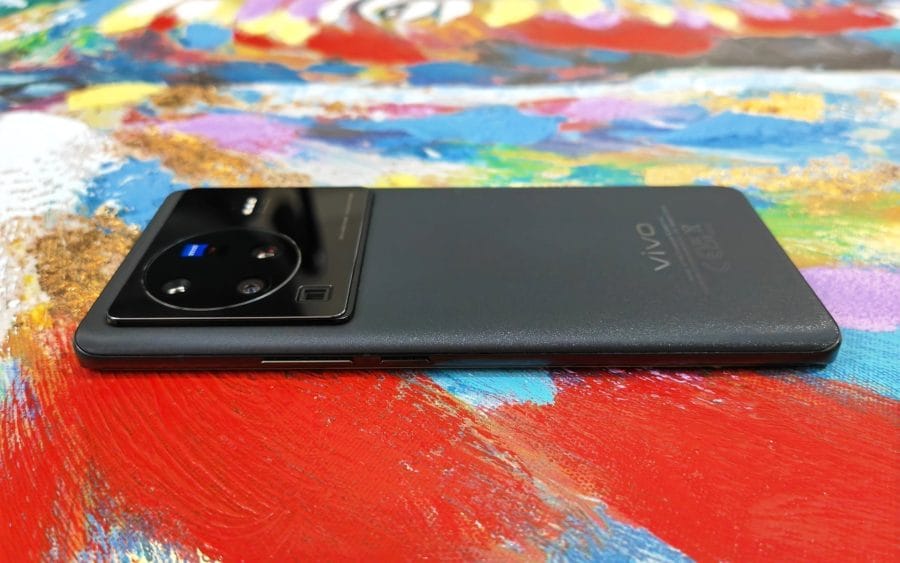
All control buttons are on the right.
The back of the vivo X80 Pro is made of frosted glass, which gives the smartphone a pleasantly delicate, if somewhat slippery, hand feel. Fingerprints hardly ever remain on the slightly shimmering back. On the reflecting camera block, on the other hand, it does.
The Cosmic Black color is the only color option that vivo offers in Europe. But that doesn't matter, because the vivo X80 Pro in Cosmic Black can hardly be surpassed in terms of aesthetics.
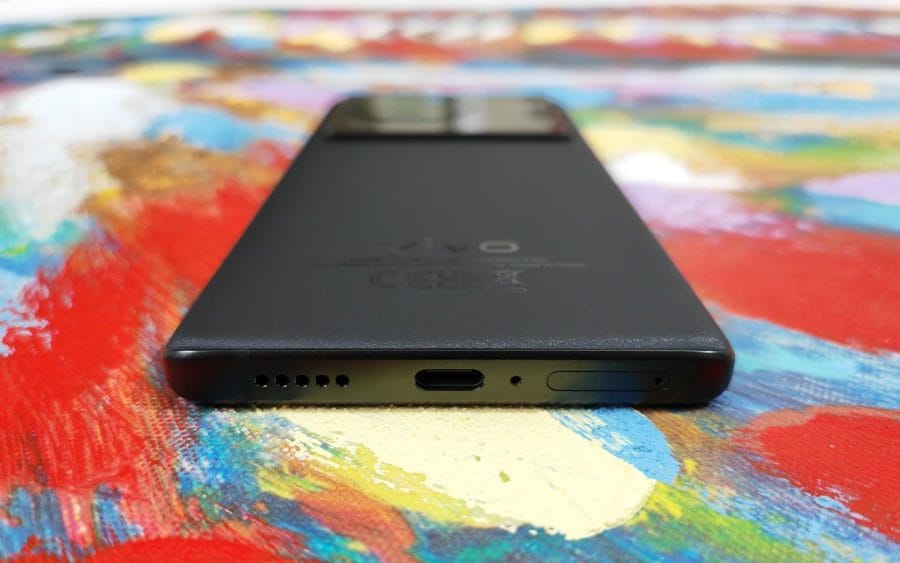
The frame is cleanly milled.
Both the glass back and the screen protector are made of hardened special glass. Particularly shatterproof Corning Gorilla Glass 6 is used on the back.
The display glass comes from the ZEISS subsidiary "SCHOTT", which has a lithium-alumino-silicate glass with particularly high scratch resistance on the market with the "SCHOTT Xensation Up". We were able to understand the quality promise of both protective glasses very well in the test. Although the smartphone was used in everyday life without a case, it still looks like it did on the first day.
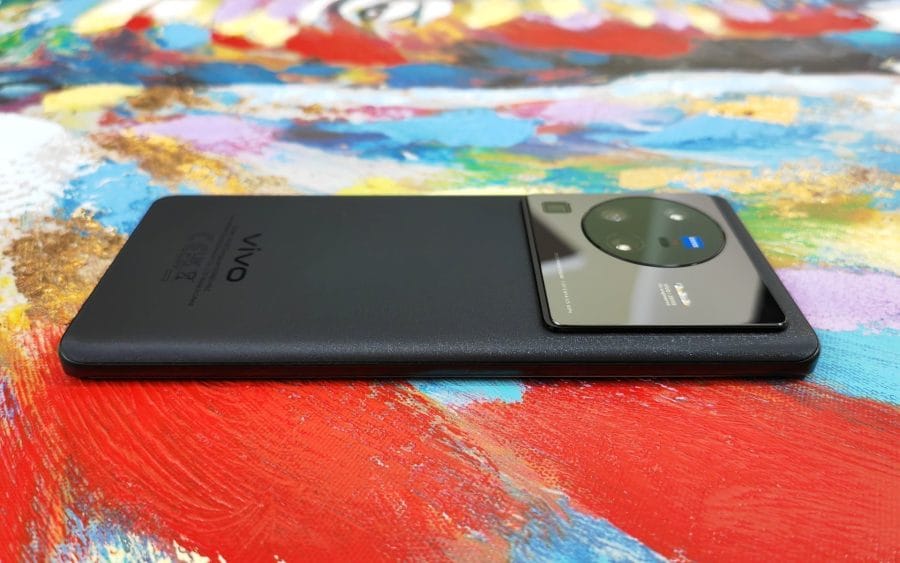
The smartphone is 164,57 x 75,30 x 9,10 mm in size and weighs 219 g.
Between the glass sandwich is a metal frame that narrows to the left and right. As a result, the display and the back literally merge together, which ensures a slim appearance and contributes to the positive hand feel. The control buttons are positioned on the right and are easy to reach. Like the frame, they are made of metal and have an excellent pressure point.
The frame is flattened at the top and bottom. The dual nano SIM slot is embedded at the bottom of the frame. The USB-C port is in the middle, with a microphone to the left and the speaker to the right. At the upper end of the frame, a glass element with "Professional Photography" imprint ensures a successful finish. Another microphone and an IR blaster are placed there.

The IR blaster can be used to control TVs, among other things.
The processing quality of the vivo X80 Pro follows the premium look and meets even the highest demands. According to IP68, the smartphone is both waterproof and dustproof.
The scope of delivery leaves nothing to be desired. Included accessories include a protective case, 80W fast charger, charging cable, wired headphones, SIM needle and the usual paperwork. A screen protector is already applied at the factory.

These accessories are included in the scope of delivery.
vivo X80 Pro: display
On the front we have a 6,78" Samsung E5 OLED display with 3200 x 1440 pixel resolution and a 20:9 aspect ratio. The panel is of type LTPO3 and supports a variable refresh rate between 1 Hz and 120 Hz. As a 10-bit display it can display up to 1,07 billion colors.
So much for the technical side. However, the display of the vivo X80 Pro not only scores on the data sheet, but also in everyday life. With a pixel density of 517 PPI, the display is pin-sharp. The resolution can also be changed between 2400 x 1080 and 3200 x 1440 in the settings. The difference is not visible to the eye. As far as battery life goes, you get a few minutes for free.
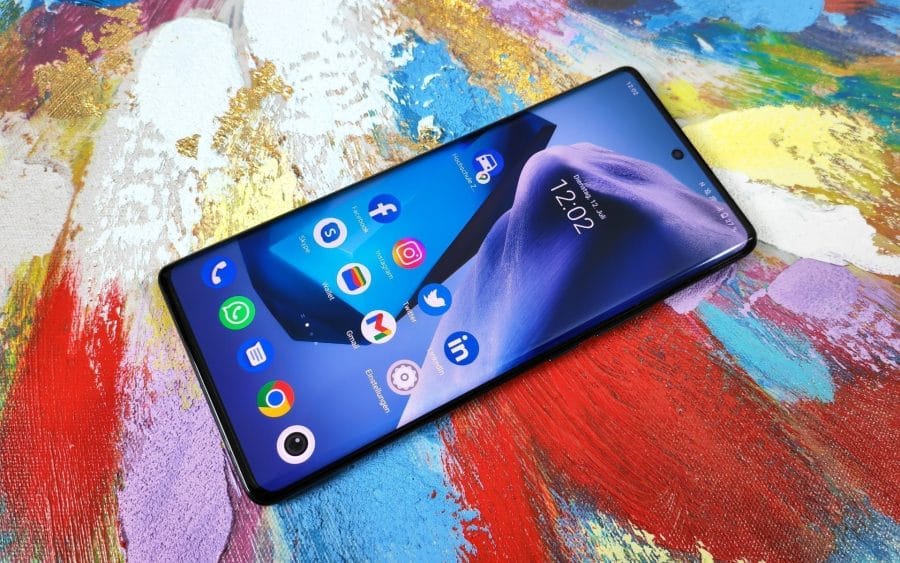
The Samsung E5 panel is one of the best displays of its time.
The variable refresh rate makes the display buttery smooth, so that there are no unsightly trailing effects when scrolling. With the "Smart switching" setting, the smartphone automatically scales between 1 Hz and 120 Hz. However, this does not always work reliably, so that it sometimes does not look as smooth as one would like. As an alternative to intelligent switching, you can choose between 60 Hz or 120 Hz. The latter definitely provides the best display, but also increases power consumption.
-

-
Display settings
-

-
Dark mode or light mode
-
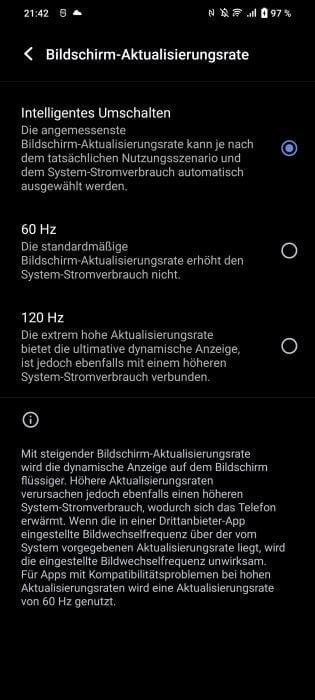
-
Refresh rate settings
For example, the intelligent switching in the Chrome browser only represents 60 Hz. With the 120 Hz setting, the 120 Hz are fully exploited, which ensures visibly smoother scrolling. Mobile games are limited to 60 Hz regardless of the setting, even if higher FPS are achieved. Incidentally, 1 Hz is only achieved on maximum display brightness.
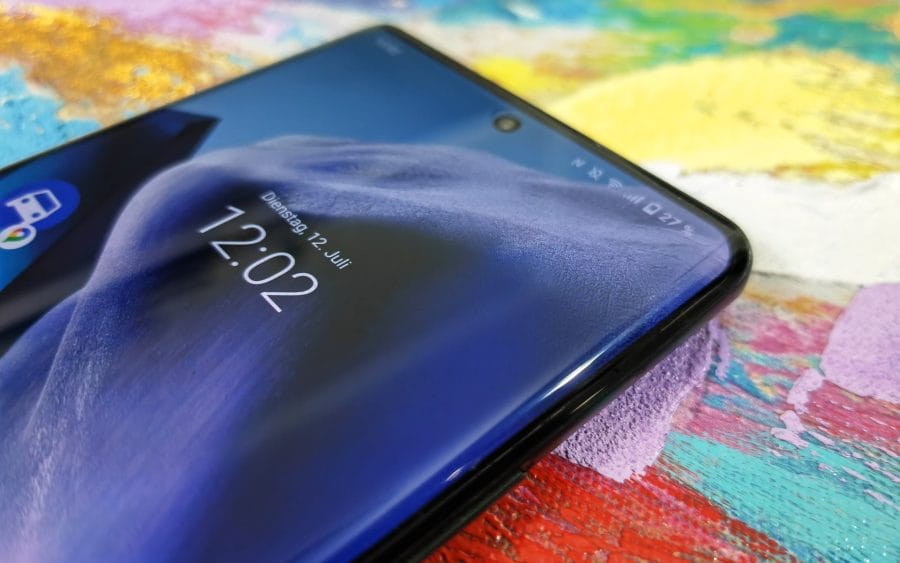
Curved or flat - an eternal topic of debate.
According to vivo, the “Local Peak Brightness” reaches a value of 1500 nits. Our colorimeter was able to measure a maximum display brightness of 1013 nits in the test. This means that the screen remains very easy to read even in sunshine. The automatic brightness adjustment also reacts quickly.
Color adjustments can be made using the three color profiles "Standard", "Professional" and "Bright". The standard profile is based on the DCI-P3 color space and ensures strong colors. The professional profile is based on the sRGB color space and tries to reduce the color difference (Delta E). In comparison, the display is a bit paler, but also closer to reality. Finally, there is the light profile, which further intensifies the color intensity of the standard profile.
-
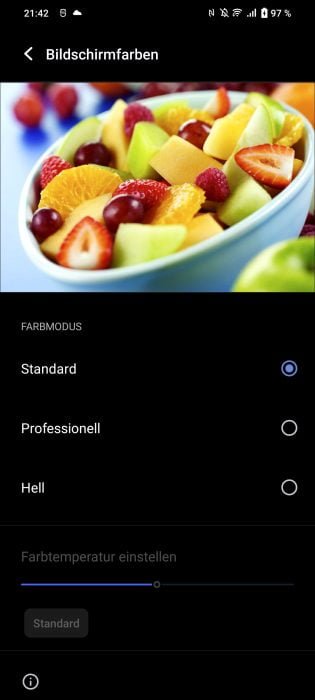
-
color settings
-

-
eye protection mode
-

-
Optical image enhancement
There is a color temperature slider for further adjustments. All three color profiles are predominantly cool, so that you can bring a little more warmth into the display via the color temperature.
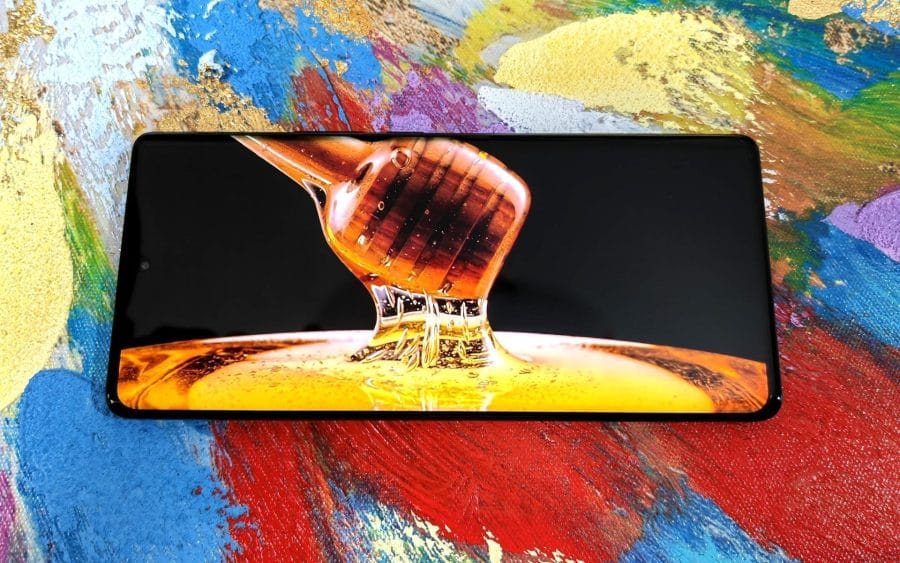
Strong colors, razor-sharp display and an almost infinite contrast.
Another display feature is HDR10+ support. Streaming HDR content via Netflix and YouTube worked reliably in the test. The Widevine L1 DRM required for Netflix HD is available.
The touchscreen with a sampling rate of 300 Hz recognizes up to ten simultaneous inputs. Every now and then it can happen that incorrect entries are triggered when gripping the display. The culprit is the strong curvature of the display edges (curved display), which mainly contributes to the look. The curved display edges of the vivo X80 Pro are less susceptible to color impairments. They do exist, but we have already had candidates in front of us that cast significantly more shadows depending on the viewing angle.
vivo X80 Pro: performance and features
In order to meet the requirements of a high-end smartphone, the vivo X80 Pro relies on Qualcomm's Snapdragon 8 Gen 1. The mobile platform has now been replaced by the Snapdragon 8 Gen 1+, but it was the manufacturer's fastest mobile platform when the smartphone was released.
In China, the smartphone is even available in two versions. In addition to the Snapdragon model, they offer a vivo X80 Pro with Dimensity 9000.
But back to the Snapdragon 8 Gen 1. The system-on-chip (SoC) is manufactured using the efficient 4nm process and is based on ARM's v9 architecture. The CPU consists of eight cores divided into three clusters. A prime core with a clock rate of 3 GHz is responsible for performance-intensive tasks. There are also three Cortex A710 cores with a clock rate of 2,5 GHz for normal tasks and four Cortex A510 cores with a clock rate of 1,8 GHz for energy-saving tasks. An Adreno 730 graphics accelerator is installed for graphics applications.
-

-
3DMark graphics benchmark
-
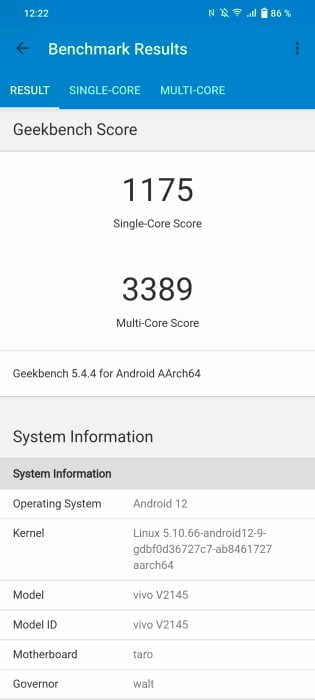
-
Geekbench
-
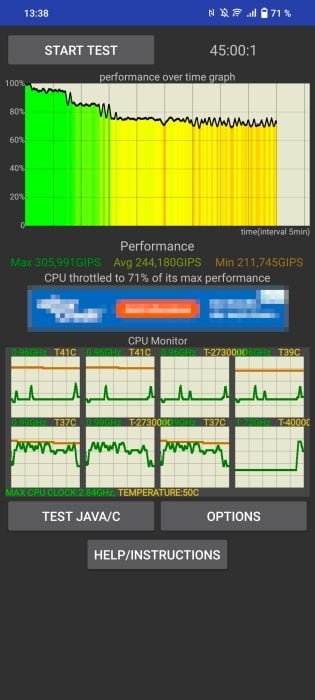
-
Thermal throttling stress test
In benchmarks, the vivo X80 Pro is on par with other smartphones with Snapdragon 8 Gen 1. Compared to a Motorola Pro Edge 30 or HONOR Magic 4 Pro, there are hardly any differences in the scores achieved. But the smartphone is also fast in everyday use and coped well with every application and every mobile game in the test.
One problem that all smartphones with Snapdragon 8 Gen 1 suffer from is the temperature-related downclocking of the performance (thermal throttling). In order not to overheat, the vivo X80 Pro corrects the performance curve downwards after just 5 minutes. After 10 minutes, the performance drops to 71% of the maximum performance. Thermal throttling is not noticeable in everyday use. There are hardly any situations in which full performance is required over the long term. Even in demanding mobile games like Diablo Immortal or PUBG, the FPS remain constant and the heat development is kept within limits.
The Snapdragon 8 Gen 1 is supplemented by fast memory modules. 12GB LPDDR5 RAM and 256GB UFS3.1 data storage are installed. The smartphone is not available in other storage variants, at least in Europe. Internal storage expansion using a microSD memory card is not supported.
Software
At the software level, the Funtouch OS 12 user interface developed by vivo awaits us. The system is based on Android 12 and has been expanded to include a number of functions and the user interface has been adjusted. Among other things, Funtouch OS 12 offers a number of different widgets that can be placed on the home screen and there are personalization options such as dynamic animation effects for the fingerprint scanner, face recognition and the loading process.
-
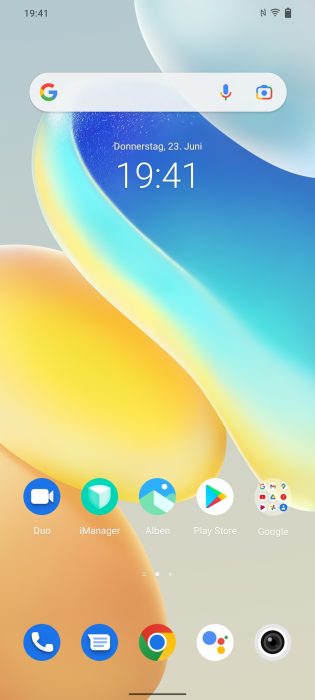
-
homescreen
-
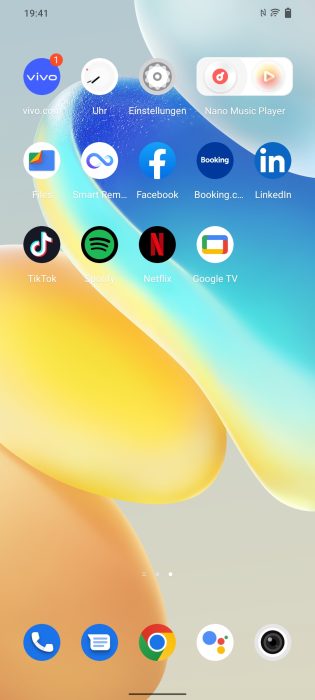
-
Pre-installed apps
-
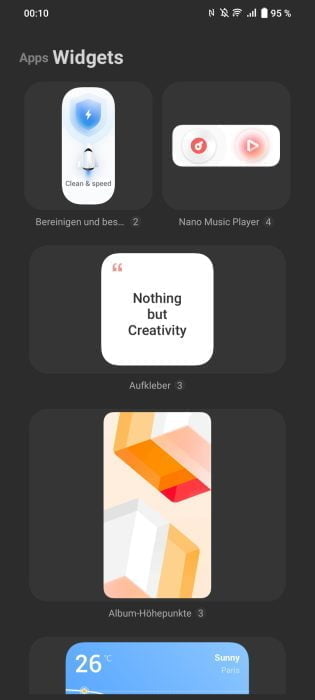
-
Widgets
The user guidance has been adjusted to facilitate one-handed operation. A customizable mini-display can be shown on the display with a gesture, which can be controlled with your thumb. There is also the option of dividing the display in the middle in order to use two apps at the same time.
-
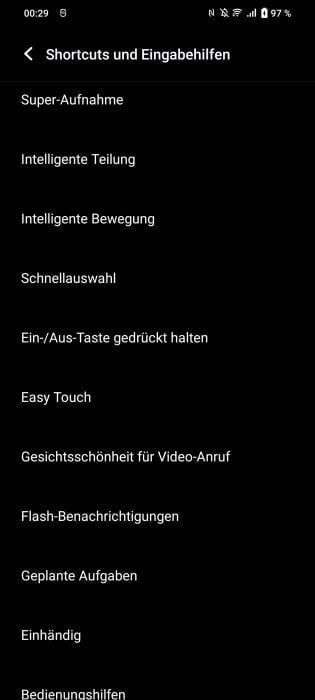
-
Shortcuts & Accessibility
-

-

-
Split screen
Funtouch OS 12 also has an always-on display integrated. In addition to personalized styles, there are setting options for the display duration and which notifications are displayed on the AoD.
-

-
AoD Personalization
-

-
AoD settings
-

-
AoD notifications
Also worth mentioning are the integrated app cloner, with which apps such as WhatsApp, Facebook and Instagram can be duplicated, the ultra game mode to improve the gaming experience in mobile games, or the extended data protection options including app encryption.
vivo promises major Android updates and security patches for a period of three years. This secures updates to Android 13 and 14. An update to Android 15 is still possible. The monthly security patches have so far been delivered promptly.
connectivity
The vivo X80 Pro offers all the connection standards that you would expect from a high-end smartphone. The smartphone supports all important 4G and 5G frequency bands (sub-6GHz) for telephoning and mobile surfing. VoLTE and VoWiFi are also supported. The smartphone does not fail in terms of reception and voice quality.
In the WLAN, the smartphone communicates with WiFi 6. We would have liked WiFi 6E here, because more and more routers now cover the 6 GHz frequency band as a “WLAN expressway”. So we can have fun with 2,4 GHz and 5 GHz, but there is nothing wrong with the data throughput of the vivo X80 Pro.

Dual SIM and dual standby
There is also Bluetooth 5.2, NFC and an IR blaster for controlling devices with infrared receivers (televisions, stereo systems, etc.). The smartphone uses GPS, BEIDOU, GLONASS, GALILEO, QZSS, A-GPS, mobile phone location and WLAN location to determine its location.
Fingerprint scanner
The 3D ultrasonic fingerprint sensor of the vivo X80 Pro is unbeatable. The scanning area is 11,1x larger than that of a conventional smartphone with an in-display scanner. But that's not all. During setup, the finger is already registered after being placed on it once. You save yourself repeated putting on and taking off, as you normally know it.
Still, the vivo X80 Pro's fingerprint scanner is no less secure or inaccurate. The sensor reacts extremely precisely over a wide area and unlocks the smartphone with outstanding speed. Private content can even be secured with two-finger verification. Instead of using just one finger, the smartphone only unlocks when two registered fingers are placed.
Audio
The stereo speakers, which are made up of the speaker on the bottom and the ear cup, deliver a full and balanced sound. Both speakers achieve a high and evenly distributed volume without distortion.
There is no 3,5mm headphone jack. Instead, you have to use Bluetooth or USB-C. Noteworthy Bluetooth audio codecs of the vivo X80 Pro are aptX, aptX HD, aptX adaptive and LDAC .
vivo X80 Pro: Camera

Four of the five cameras are located on the back.
With the camera system of the vivo X80 Pro, Vivo tries to offer the most versatile camera experience possible that can cope with all situations. A total of five sensors are used, which fulfill different purposes. Here is the overview:
- Main camera: 50 MP Samsung GNV (1/1.31" | 1.20 µm | f/1.57 | OIS)
- Ultra wide angle camera: 48 MP Sony IMX598 (1/2" | 0.80 µm | 114° | f/2.2)
- Telephoto camera: 12 MP Sony IMX663 (1/2.93" | 1.22 µm | 2x optical | f/1.85 | OIS)
- Telephoto camera (periscope): 8 MP Hynix HI-847 (1/4.4" | 1.0 µm | 5x optical | f/3.4 | OIS)
- Front camera: 32 MP Samsung S5KGD2 (1/2.8" | 0.80 µm | f/2.45)
It is striking that vivo uses two telephoto cameras here. One enables a lossless 2x zoom, the other a lossless 5x zoom. The main camera again benefits from gimbal stabilization, which can now even fix the image on the horizontal axis with a 360° rotation. Both telephoto cameras are optically stabilized (OIS).
Thanks to the cooperation with ZEISS, the lenses have a ZEISS T* anti-reflective coating, which improves the light output and avoids light reflections (ghosting). This is not empty marketing phrases, but actually works. There is also an improved version of the in-house image processing chip with the vivo V1+.
main camera
The 50 MP main camera takes advantage of pixel binning. Several pixels are combined into one large pixel, which achieves higher light sensitivity and reduces the signal-to-noise ratio. The recordings shrink to 12,5 MP.
In good lighting conditions, the sensor enables very good recordings with remarkable image sharpness and an impressive level of detail. Colors are reproduced very vividly. In terms of dynamic range and noise, the Samsung GNV does a great job. We took our test shots in different situations.
An interesting camera feature is the ZEISS Natural Color mode. If you activate the mode in the camera app, the most natural color consistency possible is achieved. This is particularly useful for users who value authenticity, but also for photo or video professionals who want a flatter display.
-

-
Without ZEISS Natural Color
-

-
With ZEISS Natural Color
-

-
Without ZEISS Natural Color
-

-
With ZEISS Natural Color
Even in poor lighting conditions, well-exposed images with a large dynamic range and good color reproduction are created. The level of detail is decent, although with the sharpening characteristic of night mode - not excessive, but not exactly natural either. Noise is barely visible, even in the shadows.
In total darkness, the night mode can conjure up a little more detail and brightness on the picture. In most cases, however, it is not worth turning on, because even without night mode, the vivo X80 Pro creates great night shots.
Ultra wide angle camera
The ultra wide-angle camera is one of the better UWKs that we have seen so far. However, it cannot keep up with the recording quality of the main camera in terms of sharpness and level of detail. Colors are particularly strong and the dynamic range is also convincing.
-

-
main camera
-

-
Ultra wide angle camera
The vivo X80 Pro does not have a macro camera, but the UWK has an autofocus and can therefore also be used for close-ups.
The macro mode can be set via the camera app. Either you activate the “Super Macro Auto” setting, in which the camera automatically decides when it makes sense to switch to macro mode, or you switch macro mode manually.
camera zoom
The lossless 2x zoom is well matched to the color display and the dynamic range of the main camera. The level of detail is good, but not quite as high as the detail image of the main camera.
-

-
Without camera zoom
-

-
2-fold
-

-
5-fold
The same can be said for the 5x zoom. Beyond 5x magnification, the recording quality slowly decreases. The maximum zoom level ends at 60x magnification.
video function
The main camera of the vivo X80 Pro is able to record videos in 8K30 and with a higher frame rate in 4K60. The ultra-wide angle camera records in 4K60, the two telephoto cameras in 1080p30.
The video functions of the vivo X80 Pro are very extensive. Those who like to film in cinematic style can use the special ZEISS Cinematic mode to record videos in the typical film format at 21:9 and 24 frames per second.
But the mode offers even more. With the help of artificial intelligence, a bokeh effect is generated during the ongoing recording and in real time. In addition, film LUTs and filters can be placed directly on the recording. Here is our video about it:
However, the resolution is limited to 1080p in ZEISS Cinematic mode. There is an additional film mode that also records in 21:9 aspect ratio in 4K and at 30 frames per second. But then without bokeh calculation.
There are three stabilization modes to choose from to stabilize the video recordings. Standard stabilization stabilizes footage up to 4K60. In addition, there is the ultra stabilization, which further intensifies the degree of stabilization with artificial calculation. Here the resolution is limited to 1080p60. The third mode is Horizontal Stabilization. In this mode, the image stabilization can be fixed on the horizontal plane, no matter how around you move the smartphone.
Switching to the ultra wide-angle camera while recording is in progress does not work. Zooming is possible with a maximum of 10x magnification. However, in video mode, the main camera is enlarged purely digitally. The two telephoto cameras are not included.
Other video functions include an HDR10+ recording mode, a teleprompter function, a beauty AI and filters. The video quality of the vivo X80 Pro is excellent and convinces day and night.
Front camera
The 32 MP front camera is ideal for selfies and video calls. Photos and videos taken with it show a high level of detail and balanced color reproduction, which makes skin tones particularly natural.
-

-
portrait mode
-

-
Normal mode
There are numerous functions in the camera app that can be used to beautify the selfies. There are various overlays, makeup, beauty and posture filters, and color filters. In addition to the normal photo mode, there is a portrait mode with depth of field. The depth of field can be set in nine steps between f/16 and f/0,95.
vivo X80 Pro: Battery
The vivo X80 Pro packs a 4700mAh battery that supports 80W wired charging and 50W wireless charging.
The Snapdragon 8 Gen 1 is not exactly known for its economical use, so that a screen-on-time of 13 hours can be spoken of as a rather average value. Transferred to everyday life, depending on the intensity of use, a battery life of 1 to 1 1/2 days can be achieved.
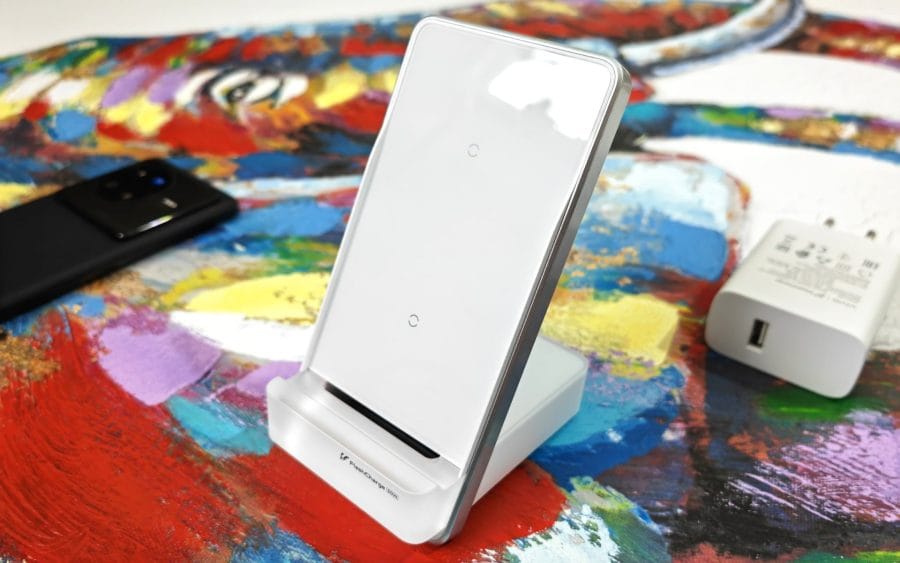
This is what it looks like, the 50W wireless flash charger
Compensating for the rather meager battery life is the fast charging time. With the supplied 80W FlashCharge charger, the smartphone can be fully charged in 38 minutes. The 50W wireless flash charger charges the smartphone from 50 to 0% in 100 minutes.
10W reverse charging is supported as an additional charging function. Then the vivo X80 Pro behaves like a power bank and can charge devices in the opposite direction.